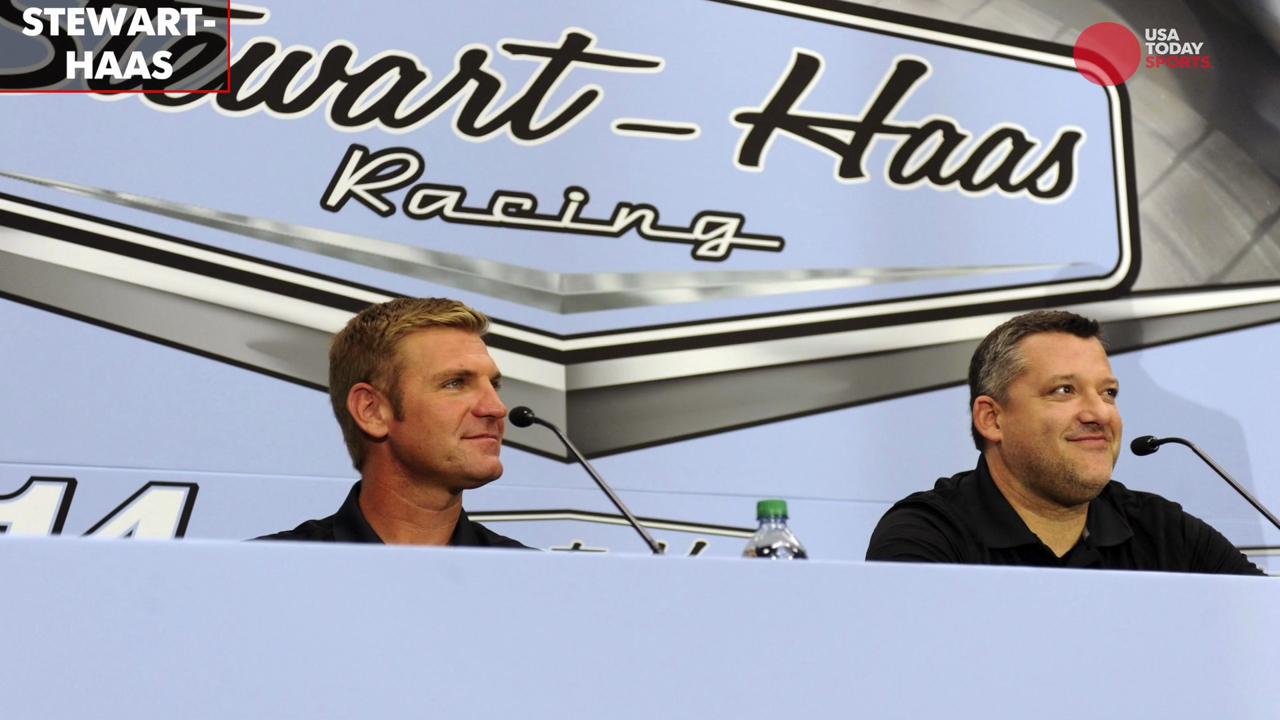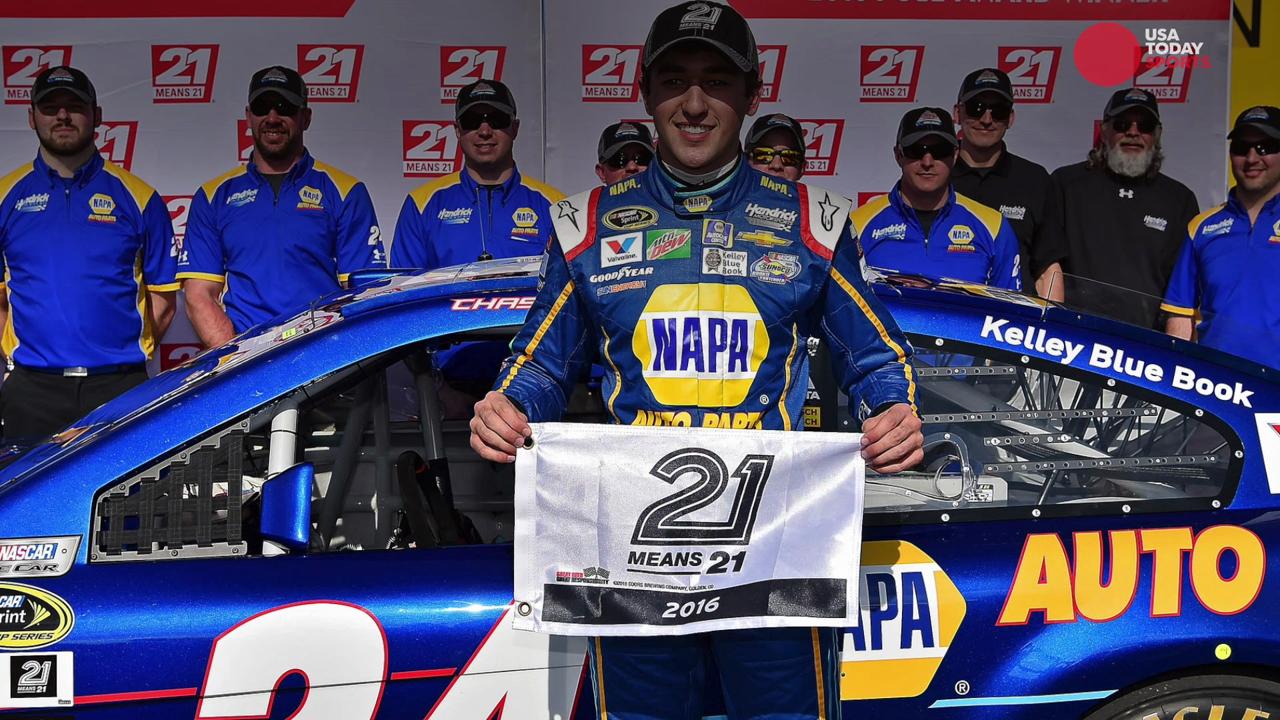NASCAR announces updated concussion protocol for drivers – USA TODAY

USA TODAY Sports’ Brant James breaks down key story lines leading into the Daytona 500.
DAYTONA BEACH, Fla. — Seven months after star driver Dale Earnhardt Jr. was sidelined because of another concussion and just hours before drivers returned to the track for the 2017 season, NASCAR announced Friday an updated protocol for its drivers.
In all of its national touring series, all of the infield care center physicians will perform the same concussion test — the SCAT-3 — when screening drivers for head injuries.
Previously, every track’s infield care center may have followed a different test. The introduction of the SCAT-3 brings uniformity and consistency to the process while providing drivers and medical personnel a comparable record in the event of multiple incidents throughout the season.
The SCAT-3 (Sport Concussion Assessment Tool) includes questions dealing with physical feeling, memory and cognitive assessment. It also includes a neurological screening for issues with speech, eye motion and gait, among others.
Earnhardt tweeted his approval: “This is a positive step toward protecting our drivers. Good to see progress being made and implemented. Health and safety is top priority.’’
It is another step toward building a safer racing environment in an effort that began in earnest after the death of Earnhardt’s father, seven-time Cup champion Dale Earnhardt Sr., in the Daytona 500 in 2001. A re-engineered car with more support, head and neck restraints and SAFER barriers (soft walls that help absorb energy during a crash) are just some of the changes the sport has seen the past 16 years.
“NASCAR has worked very closely with the industry to ensure our concussion protocol reflects emerging best practices in this rapidly developing area of sports medicine,” said Jim Cassidy, NASCAR senior vice president of racing operations, in a release. “We will continue to utilize relationships we’ve had for years with leaders in the neurological research field who helped to shape these updates.”
MORE NASCAR:
Since 2014, all drivers have been required to undergo a baseline test before each season, and all drivers have completed that for 2017.
In addition, any driver whose car sustains damage from an accident or goes behind the wall after contact must go to the infield medical center and be evaluated. Previously, a car had to be towed from the track to prompt such a visit.
Also, through its new partnership with American Medical Response, a neurologist will be available at certain race weekends for consultation. NASCAR doesn’t know yet which races those will be. As previously announced, AMR will have a handful of doctors that will rotate on tour with the series.
Concussions often are difficult to diagnose or are misdiagnosed because the symptoms can vary from person to person and may not immediately surface.

The run-up to NASCAR’s biggest race kicks off Feb. 17.
USA TODAY Sports
Earnhardt suffered a hard hit at Michigan International Speedway in June. Symptoms cropped up later, but Earnhardt said he thought he had a sinus infection. He raced the next three weeks, then sat out after consulting with doctors who determined he had a concussion. Earnhardt also missed two races in 2012 after suffering two concussions in a six-week span. Knowing the dangers, Earnhardt sought help last summer at the University of Pittsburgh Medical Center’s Sports Medicine Concussion Program. He was cleared by doctors in December and will make his return in the Daytona 500 (Feb. 26, 2 p.m. ET, Fox).
Defending series champion Jimmie Johnson told USA TODAY Sports the move was a welcomed “next layer,” but added, “I’m sure we’re going to shoot some holes in it, and there’s going to be some misdiagnoses,” noting that Will Power was held out of the 2016 IndyCar opener after failing a SCAT. Power was later found to have issues related to an inner ear infection.
Johnson said the concussion protocol had been discussed with the Driver Council midway through last season, but the issue “fired back up” after Matt DiBenedetto was held out of an Xfinity Series race at Texas Motor Speedway last fall after being placed in the concussion protocol. He had not been assessed through a CT scan and tests at a local hospital as had become policy but observed and diagnosed through remote consultation. DiBenedetto raised concerns initially because he was slow to lower his window net and wobbled when walking away from his wrecked car, but blamed soreness in injured knees.
Johnson said drivers prefer a protocol not so reliant on actions immediately after a crash, noting Kyle Larson also was heavily scrutinized after a hard crash at Fontana, Calif.
“[NASCAR is] like, ‘Look, concussions are different for everyone.’ And then we’re like, ‘We get it, but we need something better than making an opinion based on how quickly a window net comes down.’ ”
Drivers have been pushing for improvements in the areas of safety and on-site medical personnel for some time, and Denny Hamlin, who heads the Driver Council, talked about the new protocol Friday.
“We talked about this at some of the driver council meetings the last year or so,” said Hamlin after reviewing the new protocol. “I think there was some confusion possibly at Texas (Motor Speedway) with Matt (DiBenedetto). He didn’t think he was, maybe the doctor assumed he was or diagnosed him that he was. And we always wondered ‘Is it based off how the doctor is feeling that day? What is the actual protocol?’
“I think that’s a step in the right direction for sure. They (NASCAR) sometimes have to protect us from ourselves, but we also want to make sure we’re racing on the track with people that are 100%. I’m all for that. I think it’s important that we keep safety first.”
Hamlin said the drivers had not met the AMR doctors yet who would tour with the series. He also said he didn’t know if any would be neurologists.
Alex Bowman, who along with Jeff Gordon filled in for Earnhardt in the No. 88 Chevrolet while he was sidelined, said: “Obviously, that’s an area that has been talked a lot about in the past couple months and it’s an area that everybody is still learning about. I think the more stuff we can bring in and help with that, the better.”
Contributing: Brant James
Follow Tucker on Twitter @HeatherR_Tucker and James @brantjames
PHOTOS: History of the Daytona 500










































